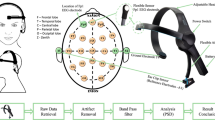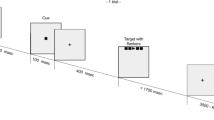Abstract
The aim of this study was to investigate, in healthy subjects, the modulation of amplitude and phase precision of the auditory steady-state response (ASSR) to 40 Hz stimulation in two resting conditions varying in the level of arousal. Previously, ASSR measures have shown to be affected by the level of arousal, but the findings are somewhat controversial. Generally, ASSR is diminished in sleep but it may be increased in drowsiness. Besides, ASSR reduction has been observed in schizophrenia. However, schizophrenic patients are known to have a disturbance of arousal level, what makes it pertinent to know the effects of fluctuations in arousal on passive response to gamma-range stimulation. In nine healthy volunteers trains of 40 Hz click stimuli were applied during two conditions: in the “high arousal” condition subjects were sitting upright silently reading a book of interest; in the “low arousal” condition subjects were sitting in a reclined position with eyes closed and the lights turned off. The 64-channel EEG data was wavelet transformed and the amplitude and phase precision of the wavelet transformed evoked potential were decomposed by the recently proposed multi-subject non-negative multi-way factorization (NMWF) (Morup et al. in J Neurosci Methods 161:361–368, 2007). The estimates of these measures were subjected to statistical analysis. The amplitude and phase precision of the ASSR were significantly larger during the low arousal state compared to the high arousal condition. The modulation of ASSR amplitude and phase precision by differences in the arousal level during recording warrants caution when investigating oscillatory brain activity and interpreting the findings of reduced ASSR in schizophrenia. It also emphasizes the necessity of standardized recording procedures and monitoring the level of arousal during ASSR testing.


Similar content being viewed by others
References
Bernstein AS (1987) Orienting response research in schizophrenia: where we have come and where we might go. Schizophr Bull 13:623–641
Brenner CA, Sporns O, Lysaker PH, O’Donnell BF (2003) EEG synchronization to modulated auditory tones in schizophrenia, schizoaffective disorder, and schizotypal personality disorder. Am J Psychiatry 160:2238–2240
Cannon TD, Fuhrmann M, Mednick SA, Machon RA, Parnas J, Schulsinger F (1988) Third ventricle enlargement and reduced electrodermal responsiveness. Psychophysiology 25:153–156
Cardenas VA, Gill P, Fein G (1997) Human P50 suppression is not affected by variations in wakeful alertness. Biol Psychiatry 41:891–901
Cohen LT, Rickards FW, Clark GM (1991) A comparison of steady-state evoked potentials to modulated tones in awake and sleeping humans. J Acoust Soc Am 90:2467–2479
Delorme A, Makeig S (2004) EEGLAB: an open source toolbox for analysis of single-trial EEG dynamics including independent component analysis. J Neurosci Methods 134:9–21
Galambos R, Makeig S, Talmachoff PJ (1981) A 40-Hz auditory potential recorded from the human scalp. Proc Natl Acad Sci USA 78:2643–2647
Gottesmann C (1999) Neurophysiological support of consciousness during waking and sleep. Prog Neurobiol 59:469–508
Hari R, Hamalainen M, Joutsiniemi SL (1989) Neuromagnetic steady-state responses to auditory stimuli. J Acoust Soc Am 86:1033–1039
Hong LE, Summerfelt A, McMahon R, Adami H, Francis G, Elliott A, Buchanan RW, Thaker GK (2004) Evoked gamma band synchronization and the liability for schizophrenia. Schizophr Res 70:293–302
Jerger J, Chmiel R, Frost JD Jr, Coker N (1986) Effect of sleep on the auditory steady state evoked potential. Ear Hear 7:240–245
Kwon JS, O’Donnell BF, Wallenstein GV, Greene RW, Hirayasu Y, Nestor PG, Hasselmo ME, Potts GF, Shenton ME, McCarley RW (1999) Gamma frequency-range abnormalities to auditory stimulation in schizophrenia. Arch Gen Psychiatry 56:1001–1005
Light GA, Hsu JL, Hsieh MH, Meyer-Gomes K, Sprock J, Swerdlow NR, Braff DL (2006) Gamma band oscillations reveal neural network cortical coherence dysfunction in schizophrenia patients. Biol Psychiatry 60:1231–1240
Linden RD, Campbell KB, Hamel G, Picton TW (1985) Human auditory steady state evoked potentials during sleep. Ear Hear 6:167–174
Linden RD, Picton TW, Hamel G, Campbell KB (1987) Human auditory steady-state evoked potentials during selective attention. Electroencephalogr Clin Neurophysiol 66:145–159
Makela JP, Hari R (1987) Evidence for cortical origin of the 40 Hz auditory evoked response in man. Electroencephalogr Clin Neurophysiol 66:539–546
Morup M, Hansen LK, Herrmann CS, Parnas J, Arnfred SM (2006) Parallel factor analysis as an exploratory tool for wavelet transformed event-related EEG. Neuroimage 29:938–947
Morup M, Hansen LK, Arnfred SM (2007) ERPWAVELAB A toolbox for multi-channel analysis of time-frequency transformed event related potentials. J Neurosci Methods 161:361–368
Oken BS, Salinsky MC, Elsas SM (2006) Vigilance, alertness, or sustained attention: physiological basis and measurement. Clin Neurophysiol 117:1885–1901
Osipova D, Pekkonen E, Ahveninen J (2006) Enhanced magnetic auditory steady-state response in early Alzheimer’s disease. Clin Neurophysiol 117:1990–1995
Pantev C, Roberts LE, Elbert T, Ross B, Wienbruch C (1996) Tonotopic organization of the sources of human auditory steady-state responses. Hear Res 101:62–74
Pastor MA, Thut G, Pascual-Leone A (2006) Modulation of steady-state auditory evoked potentials by cerebellar rTMS. Exp Brain Res 175:702–709
Picton TW, John MS, Dimitrijevic A, Purcell D (2003a) Human auditory steady-state responses. Int J Audiol 42:177–219
Picton TW, John MS, Purcell DW, Plourde G (2003b) Human auditory steady-state responses: the effects of recording technique and state of arousal. Anesth Analg 97:1396–1402
Pockett S, Tan SM (2002) The auditory steady-state response is not a suitable monitor of anesthesia. Anesth Analg 95:1318–1323, table of contents
Regan D (1989) Human brain electrophysiology: evoked potentials and evoked magnetic fields in science and medicine. Elsevier, New York
Ross B, Picton TW, Herdman AT, Pantev C (2004) The effect of attention on the auditory steady-state response. Neurol Clin Neurophysiol 2004:22
Venables P (1984) Arousal: an examination of its status as a concept. In: Stern JA (ed) Psychophysiological perspectives—festschrift for Beatrice and John Lacey. Van Nostrand Reinhold, New York, pp 134–142
Acknowledgments
The study was financially supported by the Lundbeck Foundation, the Gangsted Foundation, the Novo Nordic Foundation, the Danish Research Council and Cirius. We thank Sv. Christoffersen and Ch. Tarrild for stimulation apparatus and software development and Dr. A. Alaburda for his comments on the manuscript.
Author information
Authors and Affiliations
Corresponding author
Rights and permissions
About this article
Cite this article
Griskova, I., Morup, M., Parnas, J. et al. The amplitude and phase precision of 40 Hz auditory steady-state response depend on the level of arousal. Exp Brain Res 183, 133–138 (2007). https://doi.org/10.1007/s00221-007-1111-0
Received:
Accepted:
Published:
Issue Date:
DOI: https://doi.org/10.1007/s00221-007-1111-0




